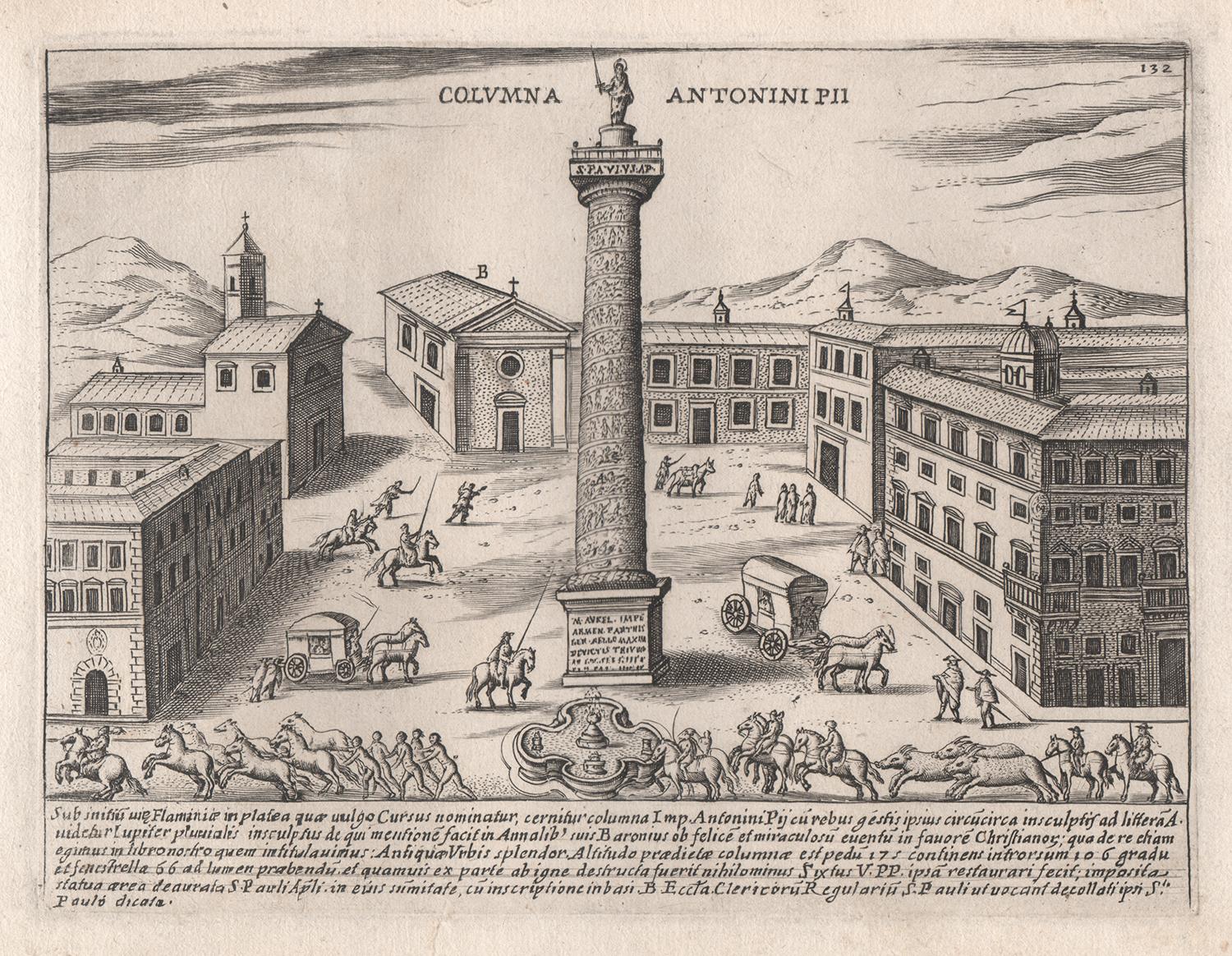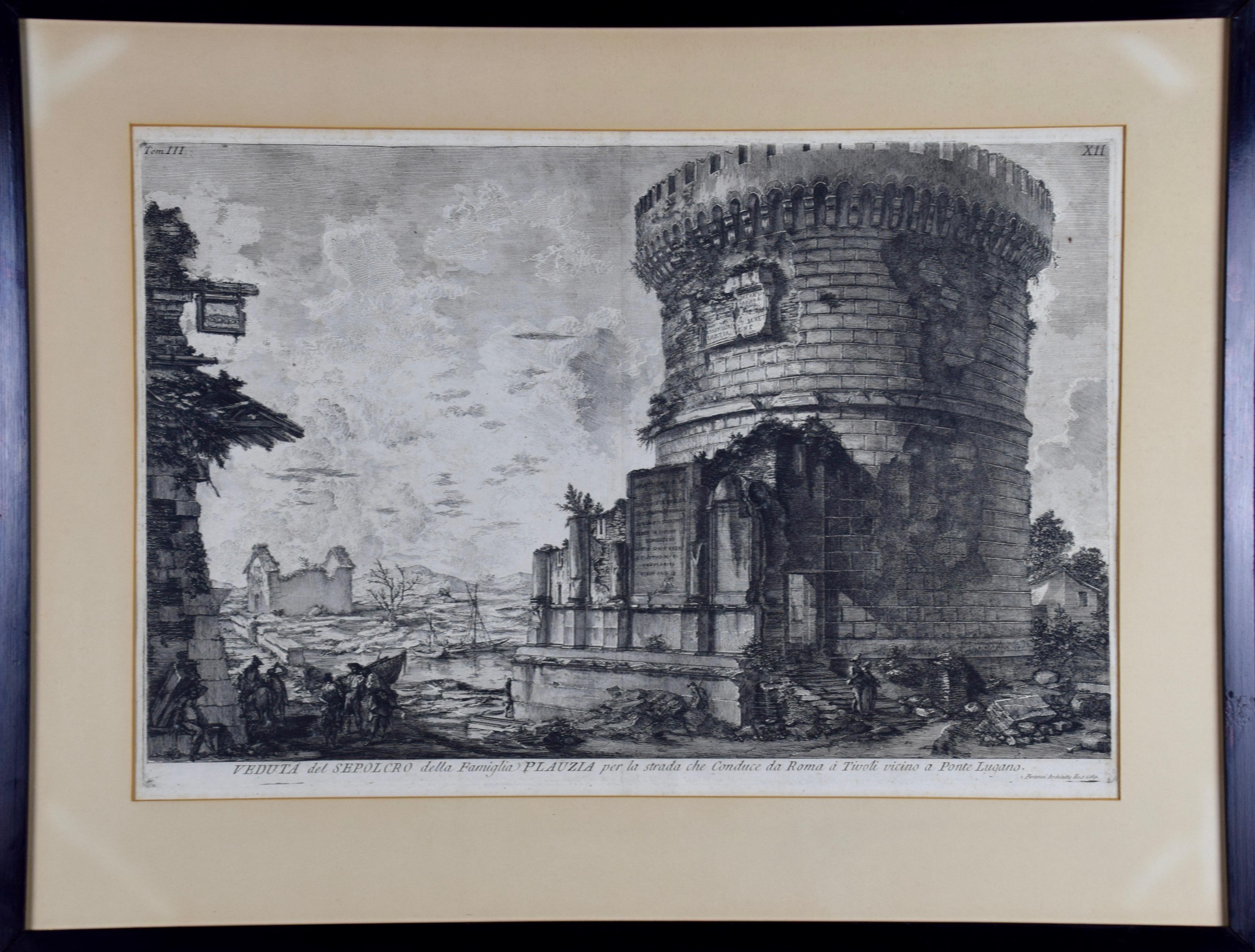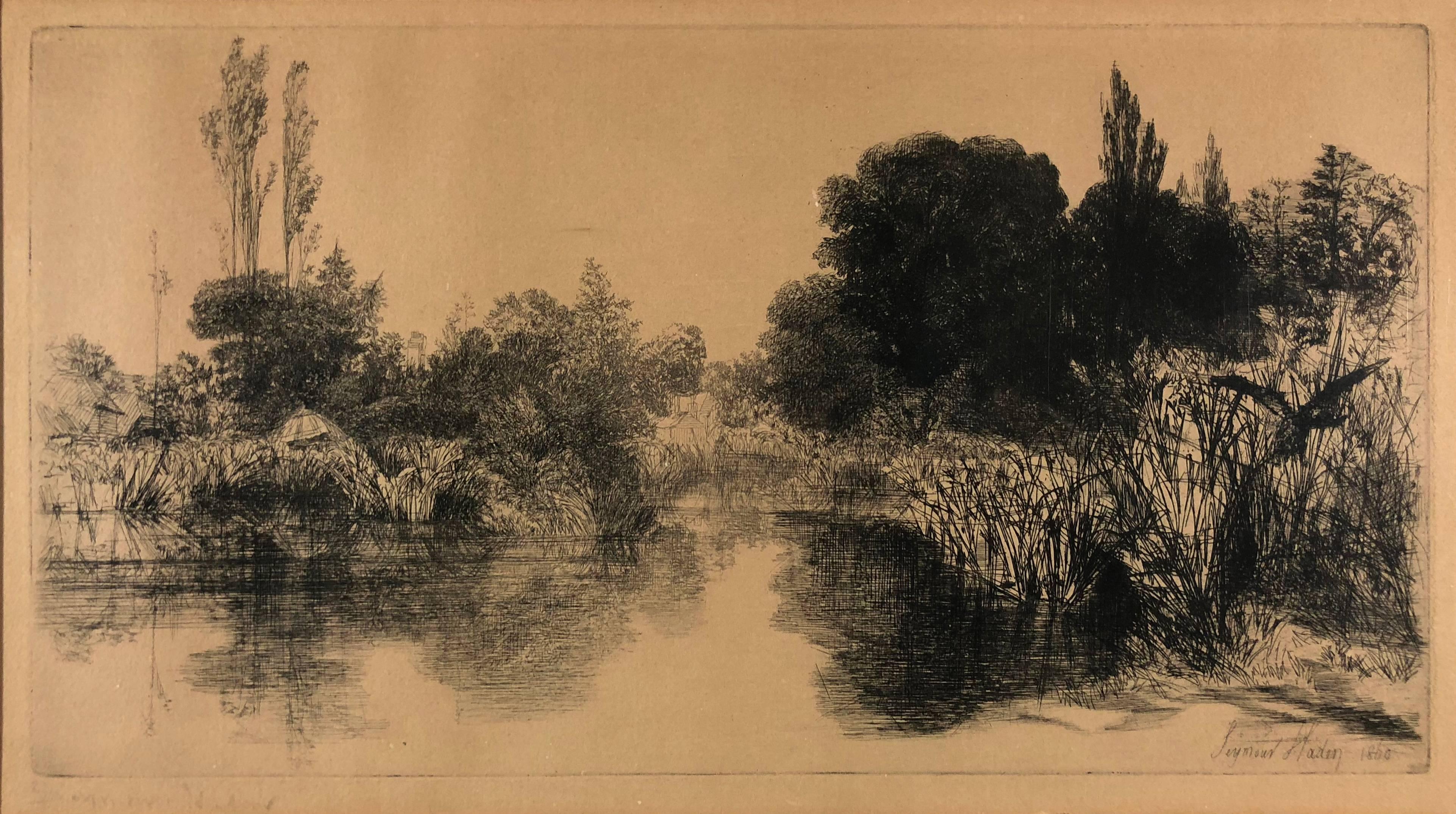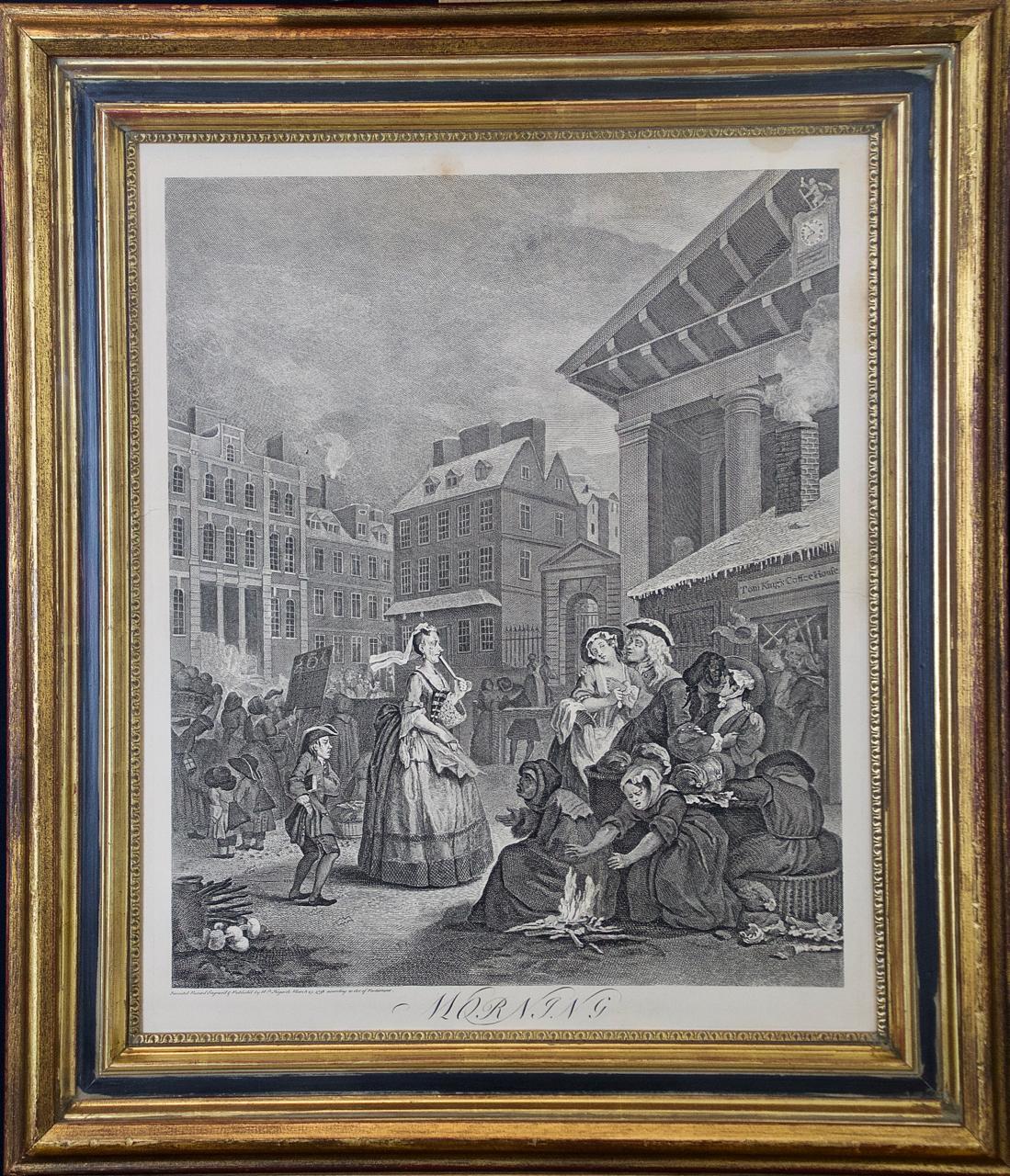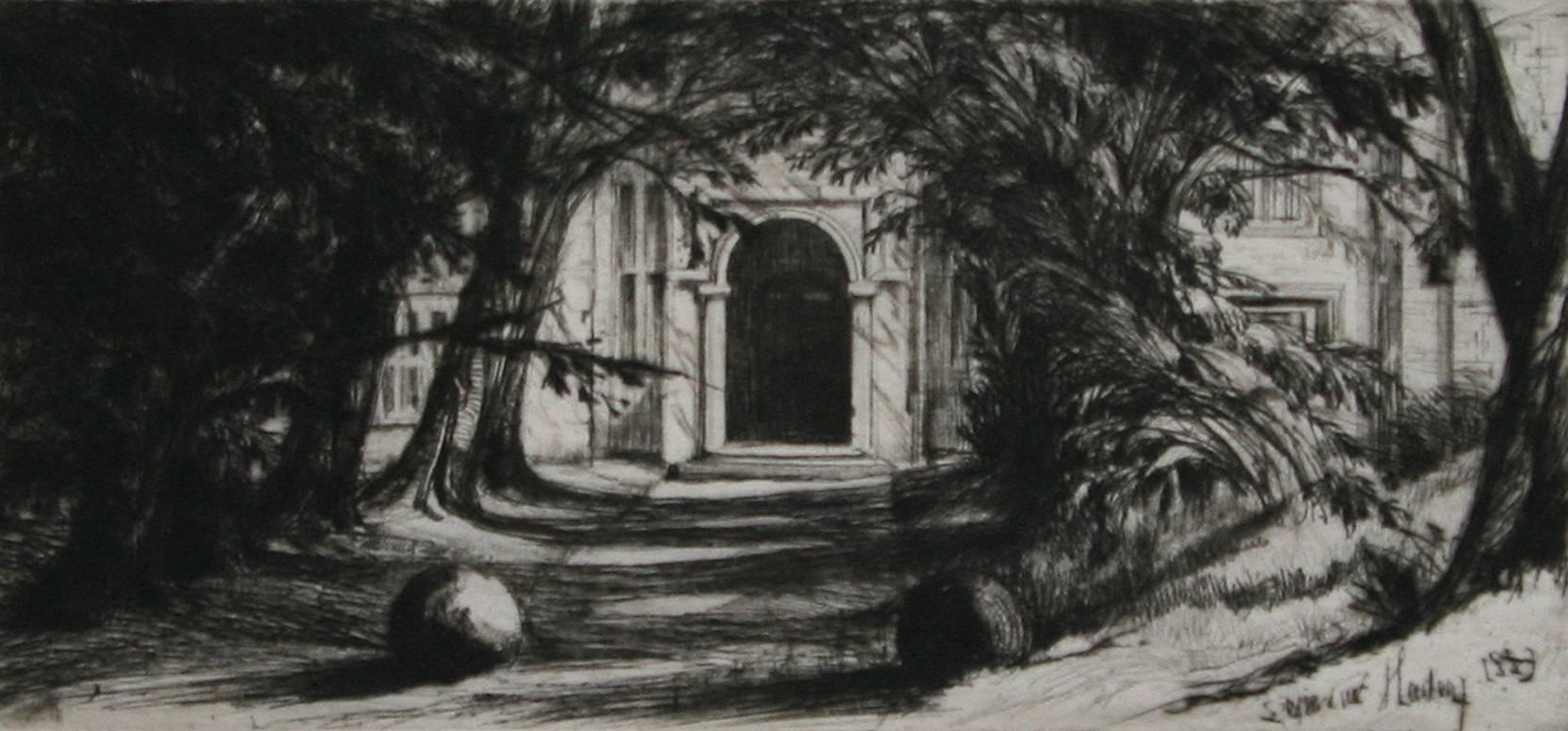Items Similar to Daniel Marot's The Siege of the Dutch Fortified City of Ypres by Louis XIV
Want more images or videos?
Request additional images or videos from the seller
1 of 15
Daniel MarotDaniel Marot's The Siege of the Dutch Fortified City of Ypres by Louis XIV1680
1680
About the Item
"Ypres, Grand Ville Riche & Marchande" is an engraving and etching by Daniel Marot (le Vieux) (1661–1752). It depicts a view of the siege of the city of Ypres and its citadel on the left in the Spanish Netherlands by Louis XIV's troops. This battle took place between March 18 and March 25, 1678, as part of the Franco-Dutch War. Marot illustrated in great detail (best appreciated with magnification) the French attack on the strong pentagonal citadel on the extreme left, which had been built recently in anticipation of a French attack. The trenches built by the French approaching the town are seen on the right. King Louis XIV can be seen in the foreground surveying the battle mounted on his white horse, surrounded by his officers and troops.
The print is presented in an attractive ornate black wood frame with a cream-colored double mat with a black inner trim. It is glazed with plexiglas. The frame measures 25.38" x 22.63" x .88". The engraving, frame, mat and glazing are in excellent condition.
Artist: Daniel Marot (1661–1752) was also called "Le Vieux". He was the son of the famous architect, Jean Marot. Marot had diverse interests and talents. In addition to his art, he designed garden projects, architectural ornaments, furniture, and even upholstery. Marot as a Huguenot protestant was forced to leave France in 1685 following the revocation of the Edict of Nantes. He emigrated to Holland, where he worked for William of Orange (an arch enemy of his former employer Louis XIV). Marot was largely responsible for the interiors of Williams palace at the Loo. In 1694 he went Britain as William had married Queen Mary and he had become King William III of England. He later returned to Holland in about 1698 and died in the Hague in 1752. He left a lasting legacy on the decorative arts in the Netherlands, where his grand version of the Louis XIV style remained popular into the 1730s.
Historical Background: In October 1677, Mary Stuart, niece and possible successor of Charles II of England, married Louis XIV's arch enemy William III of Orange. Louis decided to invade the Spanish Netherlands to counter a possible English military intervention against him. In one of his maneuvers of this military campaign, Louis deceived the Spanish into thinking that his target was Luxembourg or Namur, but instead advanced on Ypres. The Spanish and Dutch then redirected their troops from Ghent to Ypres to reinforce its defense. The French then suddenly turned on Ghent and the depleted garrison was quickly defeated. The Dutch and their allies the Spanish expected an attack against Namur or Luxembourg, but Louis deceived them by directing his troops towards Ypres causing the Spanish to take troops from the Ghent garrison and send them to reinforce Ypres. Louis then redirected his troops to Ghent, quickly capturing the city with its depleted defenses on March 9. He then continued to Ypres and laid siege to that fortified city on March 18. Vauban, the French master military engineer, dug approach trenches towards the citadel. The Spanish flooded the approaches to the fortification, but the French had already advanced too far to be hindered by this action. They pounded the city with high caliber cannons and mortars for a week and then mounted a successful attack quickly conquering the city.
- Creator:Daniel Marot (1661 - 1752, Dutch)
- Creation Year:1680
- Dimensions:Height: 25.38 in (64.47 cm)Width: 22.63 in (57.49 cm)Depth: 0.88 in (2.24 cm)
- Medium:
- Movement & Style:
- Period:Late 17th Century
- Condition:
- Gallery Location:Alamo, CA
- Reference Number:
About the Seller
5.0
Vetted Seller
These experienced sellers undergo a comprehensive evaluation by our team of in-house experts.
Established in 2011
1stDibs seller since 2019
233 sales on 1stDibs
Typical response time: 1 hour
- ShippingRetrieving quote...Ships From: Alamo, CA
- Return PolicyA return for this item may be initiated within 7 days of delivery.
More From This SellerView All
- Giovanni Piranesi Etching of Ancient Roman Architecture, 18th CenturyBy Giovanni Battista PiranesiLocated in Alamo, CA"Veduta del Sepolcro della Famiglia Plauzia per la Strada Che Conduce da Roma a Tivoli vicino a Ponte Lugano" from "Le Antichità Romane" (Roman Antiquities), one of the most famous works by Piranesi. "Antichita" illustrates the tombs along the Appian Way...Category
Early 18th Century Old Masters Figurative Prints
MaterialsDrypoint, Engraving, Etching
- Four Framed Hogarth Engravings "Four Times of the Day"By William HogarthLocated in Alamo, CAThe four plates in this "Four Times of the Day" set were created utilizing both engraving and etching techniques by William Hogarth in 1738. Hogarth's original copper plates were refurbished where needed by James Heath and these engravings were republished in London in 1822 by Braddock, Cradock & Joy. This was the last time Hogarth's original copper plates were used for printing. Most were melted down during World War I for the construction of bombs. Printed upon early nineteenth century wove paper and with large, full margins as published by William Heath in 1822. The inscription below each print reads "Invented Painted & Engraved by Wm. Hogarth & Publish'd March 25. 1738 according to Act of Parliament". These large folio sized "Four Times of the Day" engravings/etchings are presented in complex gold-colored wood frames with black bands and scalloped gold inner trim. A majority of each thick impressive frame is covered with glass applied near the outer edge. Each frame measures 25.75" high, 22.25" wide and 1.88" deep. There are a few small dents in the edge of these frames, which are otherwise in very good condition. "Morning" has two focal areas of discoloration in the upper margin and some discoloration in the right margin, a short tear in the left margin and a short tear or crease in the right margin. "Noon" has a spot in the upper margin that extends into the upper image, but it is otherwise in very good condition. "Evening" has a faint spot in the upper margin, but it is otherwise in very good condition. "Night" is in excellent condition. The "Four Times of the Day" series is in the collection of many major museums, including: The British Museum, The Metropolitan Museum of Art, The Tate Museum, The Chicago Art Institute and The Victoria and Albert Museum. Through this series Hogarth is portraying early 18th century London street life at "Four Times of the Day". His characters are exhibiting their personalities, quircks, strange activities, but he also wants to draw attention the disparities between the wealthy aristocracy and the common working class. Plate 1, "Morning" depicts morning in Covent Garden in the winter in front of Tom King...Category
Mid-18th Century Old Masters Landscape Prints
MaterialsEngraving, Etching
- Hand Colored 18th Century Homann Map of Austria Including Vienna & the DanubeBy Johann Baptist HomannLocated in Alamo, CA"Archiducatus Austriae inferioris" is a hand colored map of Austria created by Johann Baptist Homann (1663-1724) and published in Nuremberg, Germany in 1728 shortly after his death. ...Category
Early 18th Century Old Masters Landscape Prints
MaterialsEngraving
- Meissen, Germany : A Large Framed 18th Century Map by Petrus SchenkLocated in Alamo, CAThis is a hand-colored 18th century map of the Meissen region of Germany, entitled "Geographischer Entwurff Derer Aemmter Meissen als Creys-Procuratur-Schul-und Stiffts-Ammt benebst ...Category
Mid-18th Century Old Masters Landscape Prints
MaterialsEngraving
- Northern Italy: A 16th Century Hand-colored Map by Abraham OrteliusBy Abraham OrteliusLocated in Alamo, CAThis is a framed 16th century hand-colored copperplate map of northern Italy entitled "Veronae Urbis Territorium a Bernardo Bragnolo Descriptium" by Abraham Ortelius from his atlas "Theatrum Orbis Terrarum", which was the first modern atlas of the world, with the first volume published in 1570. This map was part of a subsequent volume, published in Antwerp in 1584. It was based on an earlier map by Bernardo Brognoli. This beautiful map of northern Italy is focussed on Verona and its environs, including Mantua. Lake Garda and the South Tyrol mountains are prominently depicted. There is a very large striking cartouche in the upper left and a decorative distance scale in the lower right. This striking hand-colored map of northern Italy is presented in a gold-colored wood frame and an olive green-colored mat. It is glazed with UV conservation glass. All mounting materials used are archival. The frame measures 21.5" high by 28" wide by 0.75" deep. There is a central vertical fold, as issued, with slight separation of the lower portion of the fold. There are faint spots in the upper and right margins, but the map is otherwise in very good condition. Abraham Ortelius (also known as Ortels, Orthellius, and Wortels) (1527-1598) was a Dutch cartographer, geographer, and cosmographer. He began his career as a map colorist. In 1547 he entered the Antwerp guild of St Luke as an "illuminator of maps". He had an affinity for business from an early age and most of his journeys before 1560, were for business. He was a dealer in antiques, coins, maps, and books. His business income allowed him to acquire an extensive collection of medals, coins, and antiques, as well as a large library of books...Category
16th Century Old Masters Landscape Prints
MaterialsEngraving
- A Hand Colored 17th Century Janssonius Map of Prussia: Poland, N. Germany, etc.By Johannes JanssoniusLocated in Alamo, CAAn attractive hand-colored copperplate engraved 17th century map of Prussia entitled "Prussia Accurate Descripta a Gasparo Henneberg Erlichensi", published in Amsterdam by Joannes Janssonius in 1664. This very detailed map from the golden age of Dutch cartography includes present-day Poland, Latvia, Lithuania, Estonia and portions of Germany. This highly detailed map is embellished by three ornate pink, red, mint green and gold...Category
Mid-17th Century Old Masters Landscape Prints
MaterialsEngraving
You May Also Like
- Column of Antoninus Pius, Rome Italy. Jacobs Lauro 17th century engravingLocated in Melbourne, VictoriaLauro produced a series of engravings of the ancient monuments of Classical Rome with detailed descriptions in Latin below. 180mm by 240mm (plate mark)...Category
Early 17th Century Old Masters Landscape Prints
MaterialsEtching, Engraving
- Shere Mill PondBy Sir Francis Seymour Haden, R.A.Located in Missouri, MOShere Mill Pond, No. II (large plate). 1860. Etching and drypoint. Schneiderman 37.v/ix. 7 x 13 1/8 (sheet 10 3/4 x 16 3/8). This state is prior to publication in Études à l'Eau-Forte. Illustrated: Keppel The Golden Age of Engraving; Print Collector's Quarterly 1 (1911): 18; : Guichard, British Etchers, 1850-1940. A rich, brilliant proof with drypoint burr printed on white laid paper. Signed in pencil. ------------------------------------------------------------------------------------------- Shere Mill Pond, No. II was one of the most highly praised landscape prints of the etching revival. An impression was exhibited at the Royal Academy in 1861 under Haden’s pseudonym, H. Dean. Francis Seymour Haden used this anagram of his own name early in his career as an artist, in order to retain his anonymity and preserve his professional reputation as a surgeon. Biography: Sir Francis Seymour Haden (16 September 1818 - 1 June 1910), was an English surgeon, best known as an etcher. He was born in London, his father, Charles Thomas Haden, being a well-known doctor and lover of music. He was educated at Derby School, Christ's Hospital, and University College, London, and also studied at the Sorbonne, Paris, where he took his degree in 1840. He was admitted as a member of the College of Surgeons in London in 1842. In 1843-1844, with his friends Duval, Le Cannes and Colonel Guibout, he travelled in Italy and made his first sketches from nature. Haden attended no art school and had no art teachers, but between 1845 and 1848 he studied portfolios of prints belonging to a second-hand dealer named Love, who had a shop in Bunhill Row, the old Quaker quarter of London. Arranging the prints in chronological order, he studied the works of the great original engravers, Albrecht Dürer, Lucas van Leyden and Rembrandt. These studies, besides influencing his original work, led to his important monograph on the etched work of Rembrandt. By lecture and book, and with the aid of the memorable exhibition at the Burlington Fine Arts Club in 1877, he tried to give a true reflection of Rembrandt's work, giving a nobler idea of the master's mind by taking away from the list of his works many dull and unseemly plates that had long been included in the lists. His reasons were founded upon the results of a study of the master's works in chronological order, and are clearly expressed in his monograph, The Etched Work of Rembrandt critically reconsidered, privately printed in 1877, and in The Etched Work of Rembrandt True and False (1895). Haden's printmaking was invigorated by his much younger brother-in-law, James Whistler, at the Haden home in Sloane Street in 1855. A press was installed there and for a while Haden and Whistler collaborated on a series of etchings of the Thames. The relationship and project did not last. Haden followed the art of original etching with such vigour that he became not only the foremost British exponent of that art but brought about its revival in England. His strenuous efforts and perseverance, aided by the secretarial ability of Sir WR Drake, resulted in the foundation of the Royal Society of Painter-Etchers and Engravers. As president he ruled the society with a strong hand from its first beginnings in 1880. Notwithstanding his study of the old masters of his art, Haden's own plates were very individual, and are particularly noticeable for a fine original treatment of landscape subjects, free and open in line, clear and well divided in mass, and full of a noble and dignified style of his own. Even when working from a picture his personality dominates the plate, as for example in the large plate he etched after J.M.W. Turner's "Calais Pier," which is a classical example of what interpretative work can do in black and white. Of his original plates, more than 250 in number, one of the most notable was the large "Breaking up of the Agamemnon." An early plate, rare and most beautiful, is "Thames Fisherman". "Mytton Hall" is broad in treatment, and a fine rendering of a shady avenue of yew trees leading to an old manor-house in sunlight. "Sub Tegmine" was etched in Greenwich Park in 1859; and "Early Morning--Richmond", full of the poetry and freshness of the hour, was done, according to Haden, actually at sunrise. One of the rarest and most beautiful of his plates is "A By-Road in Tipperary"; "Combe Bottom" is another; and "Shere Mill Pond" (both the small study and the larger plate), "Sunset in Ireland," "Penton Hook," "Grim Spain" and "Evening Fishing, Longparish," are also notable examples of his genius. A catalogue of his works was begun by Sir William Drake and completed by Harrington in 1880. During later years Haden began to practise the sister art...Category
Late 19th Century Old Masters Landscape Prints
MaterialsEtching, Drypoint
- Breaking up of the Agamemnon, No 1By Sir Francis Seymour Haden, R.A.Located in Storrs, CTEtching and drypoint. Schneiderman 133.v/xi. 7 3/4 x 16 3/8 (sheet 9 1/4 x 17 1/2). A rich impression with plate tone printed in black/brown in on antique cream wove paper. Signed in...Category
Mid-19th Century Old Masters Landscape Prints
MaterialsDrypoint, Etching
- Mytton HallBy Sir Francis Seymour Haden, R.A.Located in Storrs, CTMytton Hall. 1859. Etching and drypoint. Schneiderman catalog 19 state .iii/v. 4 13/16 x 10 5/16 (sheet 5 3/4 x 10 15/16). As published in Études à l'eau-forte XXIV. Illustrated: Guichard, British Etchers, 1850-1940. An extremely rich impression printed on fine laid paper. Signed in the plate. Housed in a 16 x 20-inch archival mat. Mytton Hall is a fifteenth century mansion house situated on the River Ribble, at Whalley near Blackburn, Lancashire. Haden used to stay there when he went salmon fishing. R. Gutekunst, the dealer who inherited the rights to sell all of Francis Seymour Haden's remaining prints upon his death, noted on the front of his catalogue in July 1911: "It may be useful to add that those impressions of Sir Seymour Haden's early and rare etchings, which were published in portfolio form in Paris in 1865-66, under the title Études à l'eau-forte have, with the exception of one or two sets, never been signed in autograph by Sir Seymour, and do not, of course, bear any stamp of any kind." Although Gutekunst had impressions of the majority of Haden's works for sale, he had no remaining impressions of Mytton Hall. Henry Taylor...Category
Mid-19th Century Old Masters Landscape Prints
MaterialsDrypoint, Etching
- Veduta del Tempio della Fortuna Virile, from Raccolta delle più belle Vedute ...By Giuseppe VasiLocated in Middletown, NYBy Giuseppe Vasi after Giovanni Piranesi: Etching and engraving with hand coloring in watercolor on laid paper with an E and R watermark, full margins. Minor...Category
Late 18th Century Old Masters Landscape Prints
MaterialsWatercolor, Laid Paper, Engraving, Etching
- Venus Lamenting over the Death of AdonisBy Herman van SwaneveltLocated in Middletown, NYc. 1654. Etching with engraving on thin laid paper with an early and large unidentified watermark with a sundial and a many-pointed star, and an unidentified collector's stamp in the...Category
Mid-17th Century Old Masters Landscape Prints
MaterialsHandmade Paper, Engraving, Etching
Recently Viewed
View AllMore Ways To Browse
Dutch Turn Of The Century
Charles Hollander
Holland And Sons Furniture
This Is The Enemy
Dutch Palace
King Louis Xiv
King Louis Xiv Furniture
Siege Of
British Garden Prints
17th Century William And Mary
Framed Architectural Engravings
Trim Ii
Engraving Battle
King William Iii
Siege Antique
Old Luxembourg
Dutch Battle
Dutch Garden Prints
